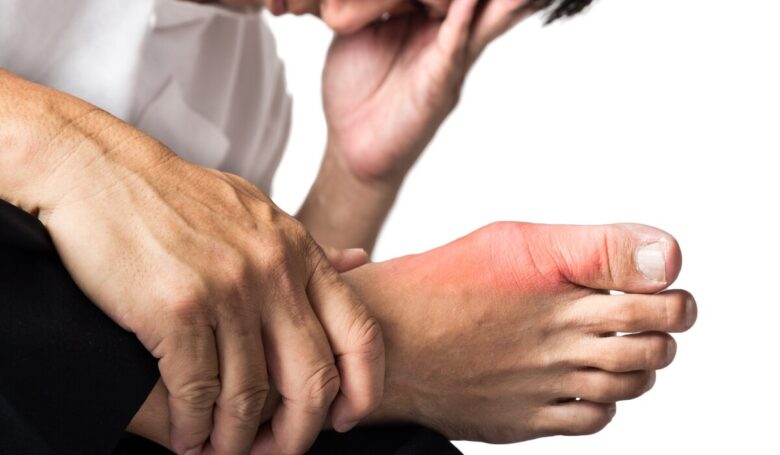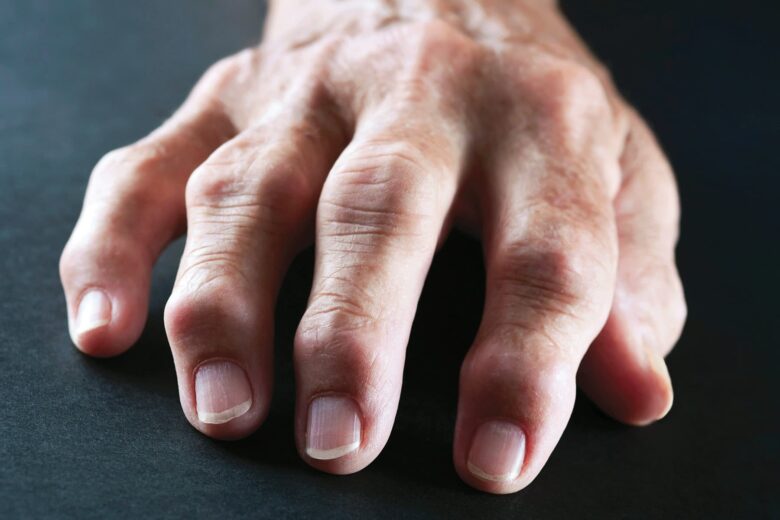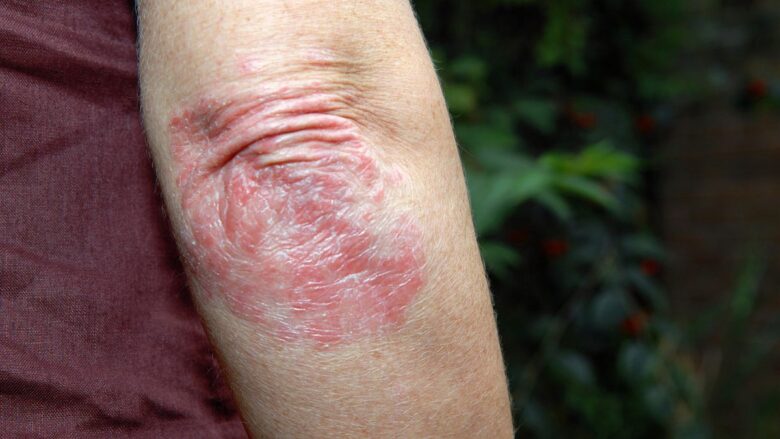If you do any physical activity, especially weightlifting, bodybuilding, or sports in general there is a good chance you’ll experience some form of joint pain. It’s really common.
It’s no fun when your joints hurt. When you’re at the mercy of pain, you miss out on what matters most, such as enjoying time with friends, family, and loved ones.
You may have thought about getting a hip replacement for your arthritic hip joint or knee replacement for severe osteoarthritis or total knee arthritis. However, they are other common types of painful joints.
This article focuses on the most common types of joint pain, symptoms, and their treatment.
1. Ankylosing spondylitis

Ankylosing spondylitis (AS) is arthritis that primarily affects the spine and pelvis (bones of the lower back). AS can cause some of the vertebrae in the spine to fuse and damage other joints. Particularly in the hips, shoulders, and ribs.
The disease most commonly develops between 16 and 35, although it can also occur later in life.
It primarily affects men more. With ankylosing spondylitis, the spine becomes inflamed, causing stiffness and pain in the back.
For some people, the inflammation can progress so that their bodies grow abnormally close together. This leads to a hunched-over appearance.
Early symptoms
In the early stages, ankylosing spondylitis primarily causes pain and stiffness in the lower back and hips.
Backache often is most intense in the mornings and after long periods of inactivity. Inflamed joints make movement painful, especially when you’re turning, twisting, or bending.
Eventually, inflammation can cause vertebrae to fuse through ossification. The ossification begins in the lower back but later spreads to other areas of your spine.
Treatment Ankylosing spondylitis
The uses for nonsteroidal anti-inflammatory drugs (NSAIDs) include the treatment of pain from arthritis, headaches, and migraines. They also are sometimes used to reduce fever and relieve minor aches and pains.
NSAIDs help reduce the production of natural chemicals in the body called prostaglandins. These are inflammatory substances that sensitize the pain areas in joints and muscles. The medications work by stopping prostaglandin production throughout the body.
Although the pain associated with AS can certainly be chronic, it tends to wax and wane, especially in the early stages of the disease process.
About 30% of patients experience intermittent pain that improves for weeks or months. As the disease progresses, though, the frequency of these remission periods fades.
And eventually disappears altogether — as the patient experiences unremitting pain.
2. Gout

Gout is a common but complicated arthritis condition. It’s caused by an accumulation of uric acid in the body, resulting in sudden and severe attacks that lead to joint pain and swelling. The critical aspect is always to identify a cause for your gout to treat it.
It often occurs in the first half of the night when uric acid crystallizes in the joints and inflames, causing pain. Gout may also occur during or immediately after a good meal.
Symptoms
Symptoms of gout usually appear suddenly and severely. Symptoms include:
- The main symptom of gout is joint pain, which may be severe for a few days. This is usually followed by swelling and redness around the joint.
- Your first gout attack can come on suddenly, and the first 24-48 hours of symptom relief can feel like an absolute miracle as you wait for a prescription to kick in. But don’t jump into your car and drive to the pharmacy quite yet.
Treatment of Gout
There are two types of gout medications available today. The first type has proven effective in the treatment and prevention of gout attacks.
You will want to consider pain relievers like ibuprofen or acetaminophen. However, if you find your doctor recommending a medication from the second group, they refer to a drug that lowers your blood levels of uric acid.
By lowering this acidic compound, it becomes easier for your body to excrete properly. This can reduce any lingering high uric acid levels and decrease risks for recurring gout attacks.
3. Rheumatoid Arthritis

Rheumatoid arthritis causes severe pain and inflammation in the joints. For instance, damaged joint tissue builds up, and the cartilage around the joints wears away.
The joints may swell and lose their ability to function, resulting in chronic pain. Some of the other effects of RA include fatigue, depression, and muscle weakness.
Inflammation is an essential healing mechanism that is generally short-lasting. However, it can occur often or chronically in some cases and cause serious health implications.
For instance, this happens with rheumatoid arthritis (RA), a chronic, long-lasting form of inflammation that can lead to joint destruction and disability without successful treatment.
Symptoms
Rheumatoid arthritis (RA) can be hard to recognize at first, especially when symptoms are mild. It is characterized by more pain or stiffness than usual after exercise or on rainy days.
RA triggers persistent and chronic inflammation of your joints, resulting in joint pain, swelling, redness, and stiffness. It’s advisable to recognize the symptoms of RA early on and get treatment before it persists.
Treatment of Rheumatoid arthritis
There’s no cure for rheumatoid arthritis (RA), but medication, rehabilitation, and lifestyle changes can slow the disease. If your RA is mild, you may only need to take nonsteroidal anti-inflammatory drugs (NSAIDs).
However, if your condition doesn’t improve or gets worse, you may be given one group of medications known collectively as DMARDS.
4. Psoriatic Arthritis

Psoriatic arthritis is a term used to describe joint pain and other symptoms that tend to occur before psoriasis develops.
Psoriasis is a chronic skin disease that causes painful redness, thickening, and scaling of the skin. It usually affects the elbows, knees, and scalp.
Think of psoriatic arthritis as five fingers on the same hand. All of these fingers are connected by the disease, but each affects different parts of the body.
It’s important to understand psoriatic arthritis isn’t about joints. It’s about your whole body and how it’s affected.
Treatment of Psoriatic Arthritis
When it comes to treating the cause of psoriatic arthritis, several types of medicines can be used.
The first is disease-modifying anti-rheumatic drugs (DMARDs). DMARDs are used along with other medications to prevent inflammation in the body.
There are several options for psoriatic arthritis treatment. This includes medications, creams, and therapies. You may feel overwhelmed by the array available.
However, don’t be afraid to ask your doctor questions or discuss your options with a rheumatologist.
Rheumatologists are experts at diagnosing and treating various types of arthritis, including psoriatic arthritis.
Your doctor will perform a physical exam, ask you about your medical history, and order blood tests to determine if you may have psoriatic arthritis.
5. Osteoarthritis

Osteoarthritis starts with the roughening of cartilage due to normal wear and tear, which only worsens as the years pass.
This is partly due to the build-up of little deposits called ‘corns’ or ‘nodes’ that appear on the cartilage surface. Corns and nodes are an important part of the osteoarthritic disease, but researchers think they only form due to trauma or injury to the joint.
The most common sites where this happens are in the hands and feet, especially at the tips of the fingers and toes – where there isn’t much soft tissue covering the joint.
Paracetamol and other NSAIDs (nonsteroidal anti-inflammatory drugs) are common treatments for osteoarthritis (OA).
They can help you to improve your quality of life and reduce your pain, stiffness, and swelling.
One of the most common sources of pain and discomfort for humans, though not typically considered, is joint and muscle pain.
Although the cause may closely follow from a mild strain or over-use of a muscle, the human body is truly a complex system.
There are multiple joints in the body, and each one allows for hundreds of distinct movements. If you are looking for a great resource that helps with joint pain we recommend checking out Integrated Orthopedics.


